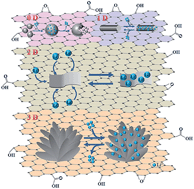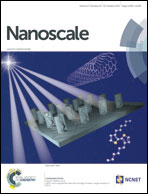Graphene-based nanocomposite anodes for lithium-ion batteries
Abstract
Graphene-based nanocomposites have been demonstrated to be promising high-capacity anodes for lithium ion batteries to satisfy the ever-growing demands for higher capacity, longer cycle life and better high-rate performance. Synergetic effects between graphene and the introduced second-phase component are generally observed. In this feature review article, we will focus on the recent work on four different categories of graphene-based nanocomposite anodes by us and others: graphene-transitional metal oxide, graphene–Sn/Si/Ge, graphene–metal sulfide, and graphene–carbon nanotubes. For the supported materials on graphene, we will emphasize the non-zero dimensional (non-particle) morphologies such as two dimensional nanosheet/nanoplate and one dimensional nanorod/nanofibre/nanotube morphologies. The synthesis strategies and lithium-ion storage properties of these highlighted electrode morphologies are distinct from those of the commonly obtained zero dimensional nanoparticles. We aim to stress the importance of structure matching in the composites and their morphology-dependent lithium-storage properties and mechanisms.


 Please wait while we load your content...
Please wait while we load your content...